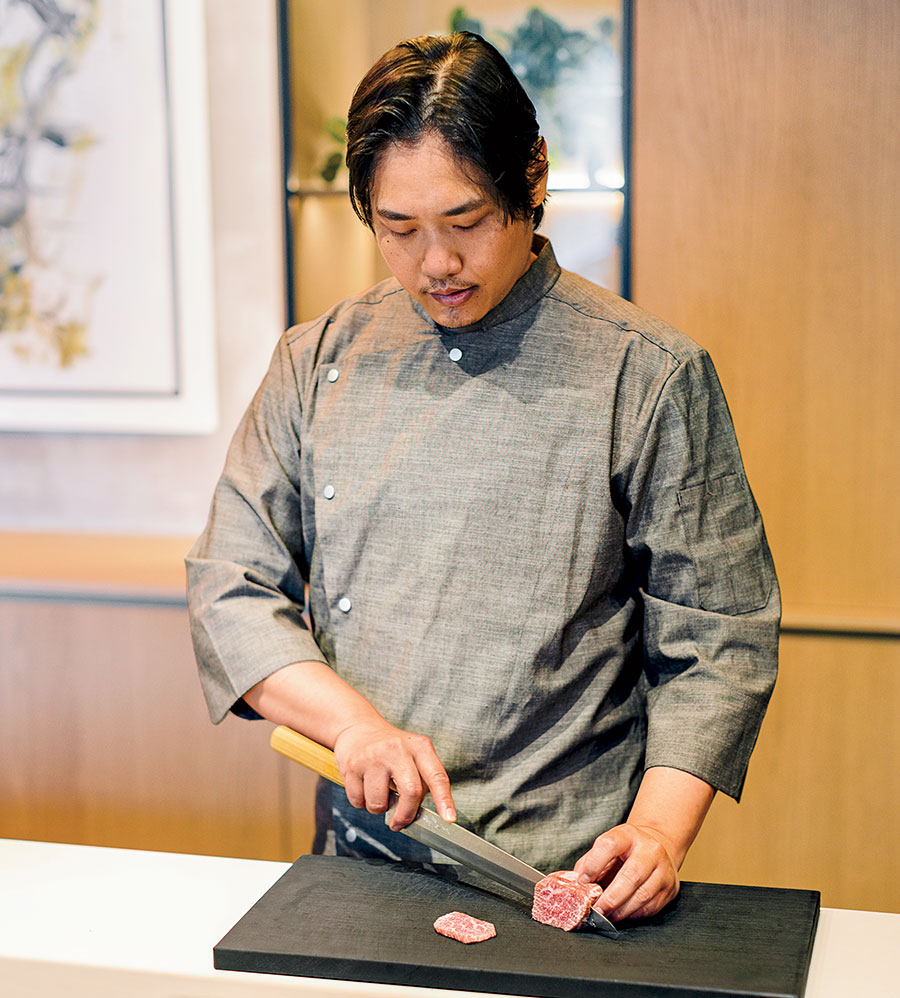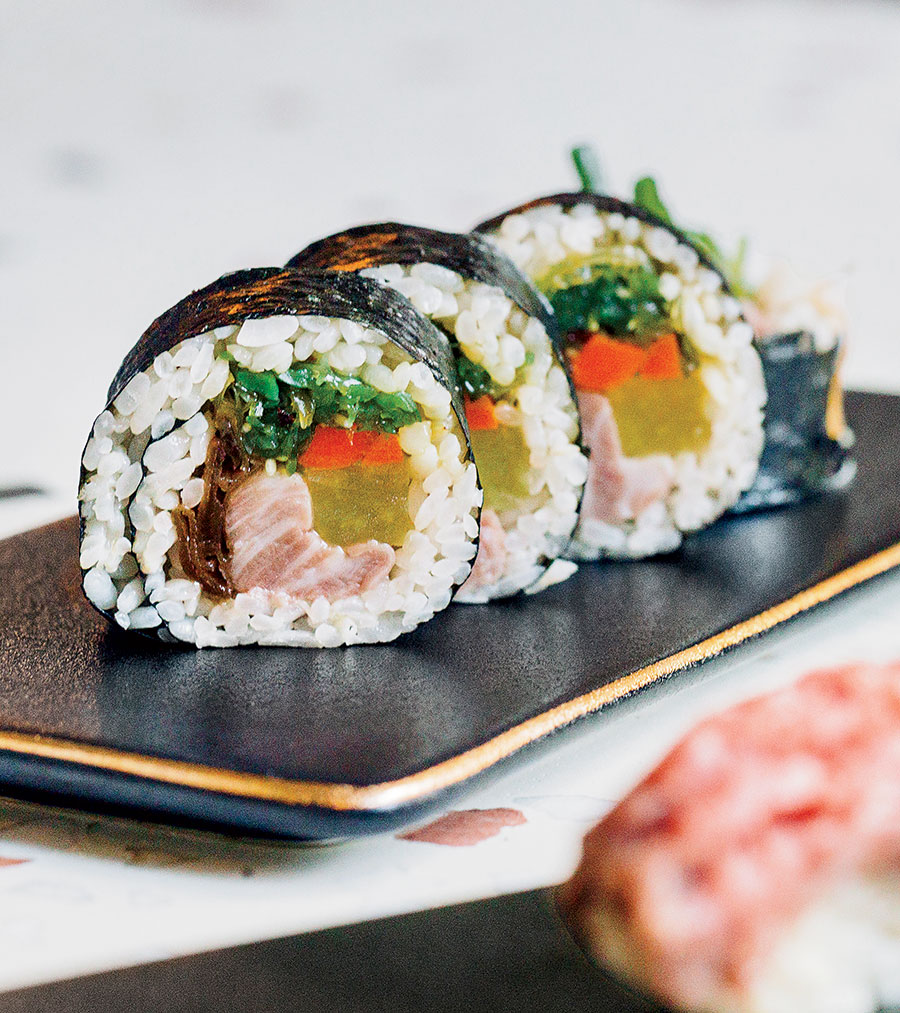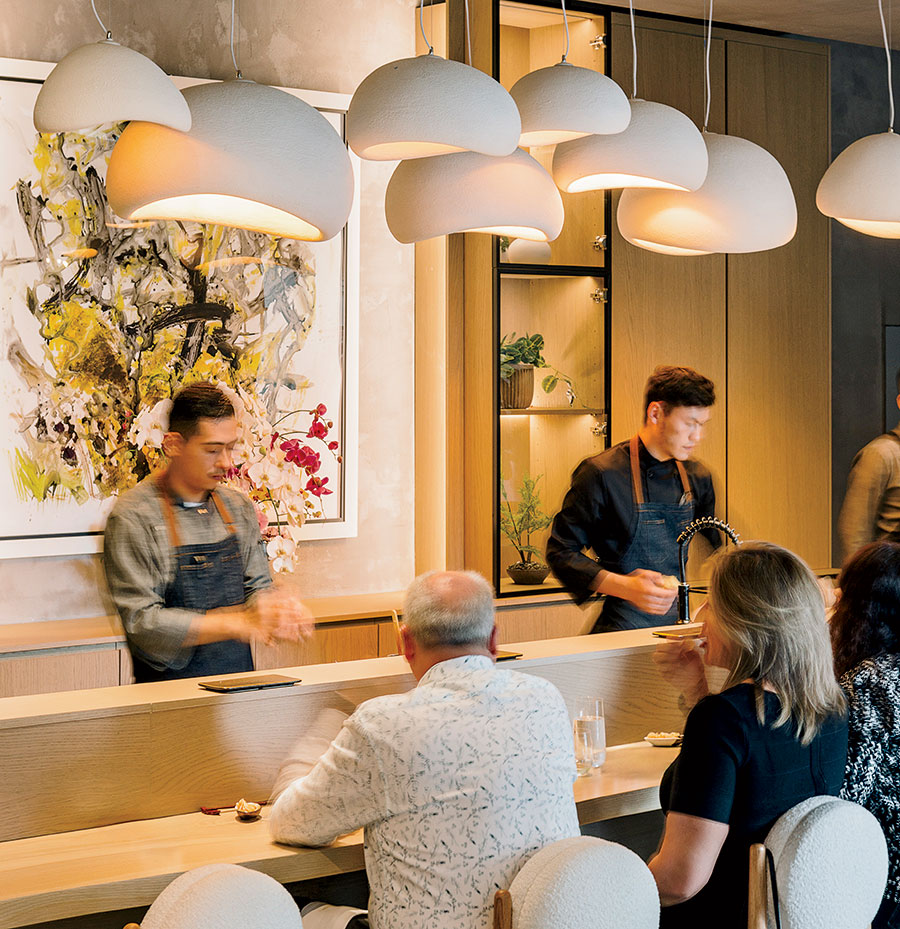Nearly 40 years ago, I arrived in Japan for my first job out of college and mustered the courage to try sushi. I ordered a standard set arranged on a wooden board and ate each piece in turn: fluke, tuna, yellowtail, octopus, shrimp, salmon roe, and, finally, a slab of something yellow and spongy that scared the bejesus out of me. What part of fish anatomy was this? Maw? Later I learned it was simply tamago: sweetened egg omelette, usually reserved for a last bite.
By the time I left Japan a couple of years later, sushi was my favorite meal. In the intervening decades, it has become everyone else’s as well. When I wrote a cover story for Chicago last September about the new wave of omakase, it seemed like the city had reached peak sushi. Our cover star was Kyoten chef Otto Phan, who serves some of the best wild fish available on the world market for those willing to pay for it.
Nearly a year later, omakase can’t stop, won’t stop. Many new venues have opened, including Sushi by Scratch, a dim, subterranean speakeasy with a punk club vibe that my editor and I have dubbed “the sushi dungeon.” Omakase isn’t a passing trend — it is the future of the multiverse’s favorite luxury meal. With so many options in Chicago, where should you go to experience a superlative omakase without paying Kyoten prices? If you’re looking for an evening that combines boisterous hospitality, fun design, and deliciousness, I might suggest the Omakase Room at Sushi-San. If you want the yums but find yourself more interested in the nuances of piscine flavor and the proper craft of the sushi bar, then you should visit Kyoten Next Door.

Phan opened this 10-seat counter alongside his Logan Square flagship in April. Here, he relies more on aquaculture than wild products, allowing him to charge $159 per person for the meal (compared with Kyoten’s $440 to $490) — a price in keeping with, if not a smidge cheaper than, other high-end omakases in town. For instance, your meal may kick off with a luscious bite of Ora King salmon from New Zealand. Menus as diverse as Mako’s and Oriole’s name-drop this premium farmed fish, whose sweet flavor lingers cleanly, something the farmed Atlantic salmon in your poke bowl will never do. Kyoten proper plays in a different league — one determined by the seasonal delicacies aswim in the Sea of Japan.
Phan also keeps the cost in check by eschewing the small appetizers that have become a fixture of modern omakase menus and instead serves a traditional Japanese-style version almost entirely made of nigiri passed, piece by piece, by Jorge and Mugi, the two itamae-san behind the counter. (For now, Phan stands to the side with a glass of wine and chats up guests, letting his staff get their footing and only occasionally swooping in to check the flavor on a lobe of Hokkaido uni.) The meal unfolds like a taut album you listen to on headphones, each of the dozen pieces a track that brings a new hook and a singular vibe — lush, moody, edgy — at just the right moment.
That oil-rich Ora King salmon may still be tickling your aah spot when its close relative, seatrout, appears on the little dish before you. This piece is lightly smoked, bringing another dimension of flavor. Then, to switch things up, comes goldeneye snapper — sleek on the tongue, soft to the bite, mild under its squeeze of citrus, and finishing with a flavor like butter on popcorn. It’s the mellower pieces during an omakase that pull you in and make you pay attention.

American sushi fans love the richest bites, though, so not much time will elapse until toro, a slice of tuna belly nearly white with fat, is melting on your tongue and focusing your every neuron on the sensation of bliss. There’s more where that came from: a piece of A5 (the most marbled) Japanese beef, torched until it nearly sizzles, bringing out something like a backyard barbecue flavor. So nostalgic was the flavor for me that I almost wanted a daub of A.1. for this A5.
While other sushi chefs in town focus on the soft, plush cuts that guests love, Phan encourages us to explore what the Japanese call hikarimono, meaning “shiny things.” Think sardines, mackerel, and other silver-skinned swimmers that can seem “too fishy” to the uninitiated. These species need a stronger cure to let you appreciate them. He has sourced excellent kohada — gizzard shad, an admired but rare-in-Chicago delicacy — and a wild aji (horse mackerel) with so much umami it was literally mouthwatering.
The meal ends with a trio of three bites. There’s a clever take on kim bop, a Korean-style sushi roll with beef and vegetables; a crisp tuna and avocado hand roll; and a singular version of tamago, custard flavored with sweet corn and maple — that is, dessert by any other name.
The meal is almost hypnotic in its pacing, a quality underscored by the ultradesigned room (sleeker than Kyoten) and the soporific piped-in music (I Shazamed “Jazzy’s Joint” by Jazzinuf). I don’t love being in this room as much as I love the food. My only other complaint is the drink menu, a bone-thin selection of one whiskey, one beer, very few sakes, and expensive wines served in scant pours.
Yet I so appreciate the way a meal here focuses your attention on the product: You come to taste premium fish outfitted with vinegared rice and a light brush of soy. The meal, with its dozen pieces of nigiri, isn’t designed to leave you stuffed. (If it leaves you wanting, you can order more at a reasonable price.) I felt a rare kind of satiety buoyed by the sense that I could remember and thus relive each piece. I believe this is why I and so many others love sushi, and why meals from 40 years ago have the remarkable ability to stay with us. No other food is quite so mindful.



